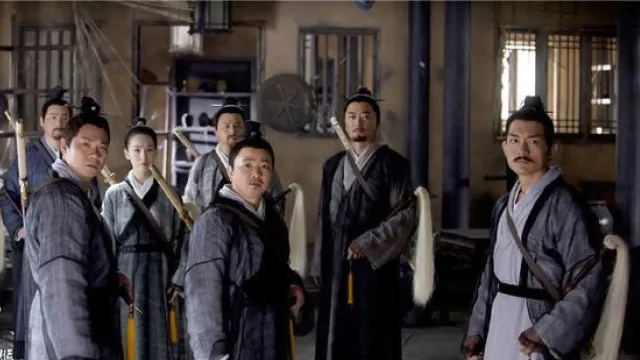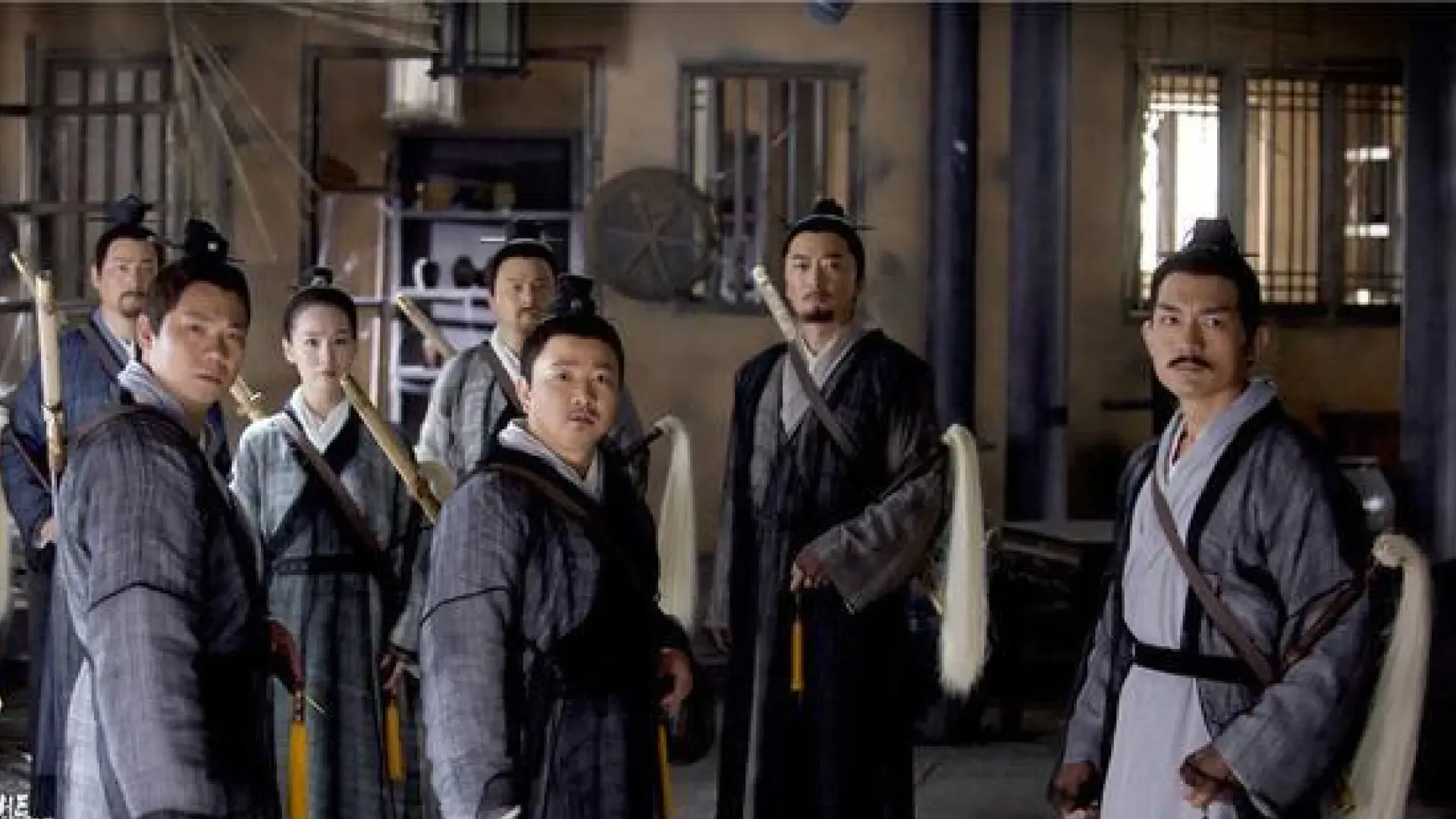Liu Chuxuan (simplified: 刘处玄, traditional: 劉處玄, pinyin: Liú Chǔxuán, jyutping: lau4 cyu5 syun4), known by his Daoist name Changshengzi (长生子 – Chángshēngzǐ), was one of the Seven Zis of Quanzhen and the fourth leader of the Quanzhen Order after Tan Chuduan. A disciple of Wang Chongyang, the Central Divine of the Five Greats, Liu Chuxuan was known for his scholarly nature and theological depth, providing crucial administrative continuity during a transitional period in the Order’s development.
His most significant contribution was founding the Suishan School (随山派 – Suíshān Pài), a specialized branch of the Quanzhen Order based in Shandong Province. Although his leadership tenure lasted only six months before he transferred authority to Qiu Chuji, his period as leader was marked by stability and careful consolidation of the Order’s gains. His scholarly approach and administrative skills helped maintain the Order’s spiritual integrity during periods of rapid growth and external pressures.
Biography
Liu Chuxuan was born in Laizhou, Shandong Province, and lost his father at an early age. He was renowned in his local community for his filial piety and devotion to his mother, demonstrating the moral character that would later make him suitable for leadership within the Quanzhen Order.
Before meeting Wang Chongyang, Liu had already shown inclinations toward Daoist cultivation and spiritual development. He possessed natural scholarly abilities and an interest in classical texts that would later influence his approach to martial arts and religious instruction. His background in Shandong Province gave him deep understanding of local customs and traditions that would prove valuable in his later role as a regional leader.
Under Wang Chongyang’s tutelage, he mastered the fundamental Innate Skill and various Quanzhen martial arts techniques. His Daoist name Changshengzi, meaning “Long Life Master,” reflected both his spiritual aspirations and his scholarly approach to understanding the principles of longevity and cultivation.
One of Liu Chuxuan’s most lasting contributions to the Quanzhen Order was his establishment of the Suishan School (also known as Suishan Daoism) in Shandong Province. The school was founded in Laizhou, his hometown, where he could effectively combine his local knowledge with Quanzhen teachings to create a regional center that served the specific needs of the local population.
Following the death of Tan Chuduan in 1185, Liu Chuxuan assumed leadership of the Quanzhen Order as its fourth leader. His succession was smooth and uncontroversial, largely due to his close relationship with Tan and their shared scholarly interests and administrative concerns.
During his six-month tenure as leader, Liu focused on consolidating the organisational gains made under his predecessors rather than pursuing aggressive expansion. His approach emphasized strengthening existing institutions and ensuring that rapid growth did not compromise the quality of instruction or spiritual development.
Recognizing that the changing political and martial arts landscape required more assertive leadership than his scholarly temperament naturally provided, Liu Chuxuan made the strategic decision to transfer leadership to Qiu Chuji after only six months as the Order’s head.
After transferring central leadership to Qiu Chuji, Liu Chuxuan returned his focus to the Suishan School and continued regional development work in Shandong Province. His regional leadership proved highly effective, as he was able to concentrate on the detailed work of training disciples and building local institutions without the distractions of Order-wide administration.
Personality and traits
Liu Chuxuan possessed a deeply scholarly and analytical nature that distinguished him from some of his more action-oriented martial brothers. His approach to both martial arts and spiritual cultivation emphasized understanding underlying principles before practical application, making him an exceptional teacher and theorist.
Liu’s approach to leadership emphasized careful planning, consultation, and systematic implementation rather than charismatic inspiration or aggressive action. His administrative style proved particularly effective during periods when the Quanzhen Order needed consolidation rather than expansion.
Liu’s decision to transfer leadership to Qiu Chuji after only six months demonstrated exceptional selflessness and strategic wisdom. Rather than clinging to power or authority, he recognized that the Order’s needs required different leadership qualities than his natural temperament provided.
Martial arts abilities
As one of Wang Chongyang’s direct disciples, Liu Chuxuan mastered the profound Innate Skill that formed the foundation of all Quanzhen martial arts. His qi cultivation reached high levels, though his approach emphasized understanding and control rather than raw power.
Liu’s approach to martial arts emphasized understanding the theoretical principles behind techniques before focusing on practical application. His teaching methods integrated classical Chinese philosophy with martial arts training, creating a comprehensive educational approach that developed both physical capabilities and intellectual understanding.
The martial arts methods developed within the Suishan School under Liu’s leadership emphasized precision, control, and adaptability rather than aggressive power. These techniques proved particularly effective for scholarly practitioners who sought martial skills that complemented rather than dominated their intellectual pursuits.
As one of the Seven Zis, Liu Chuxuan participated in the legendary Big Dipper Formation, occupying a position that utilized his analytical abilities and steady temperament. Within the formation, his role involved providing tactical analysis and coordination support that enhanced the collective effectiveness of all seven participants.
Relationships
Liu Chuxuan’s relationship with his shifu1 Wang Chongyang was characterized by mutual appreciation for scholarly depth and intellectual rigor. Wang recognized Liu’s analytical abilities and encouraged his development of systematic approaches to Daoist cultivation and martial arts instruction.
Liu’s relationship with Tan Chuduan was particularly close due to their shared scholarly interests and administrative concerns. Their collaboration was crucial in maintaining the Quanzhen Order’s intellectual traditions and ensuring smooth leadership transitions.
Among his martial siblings, Liu maintained harmonious relationships that reflected his diplomatic temperament and collaborative approach to problem-solving. His ability to work effectively with diverse personalities contributed to the overall unity and effectiveness of the Seven Zis as a leadership group.
Behind the scenes
Liu Chuxuan represents Jin Yong’s exploration of scholarly leadership within martial arts organisations, demonstrating how intellectual depth and administrative skill can complement rather than conflict with martial prowess. His character shows the importance of diverse leadership styles within effective organisations.
The historical Liu Chuxuan (1147-1203) was indeed the fourth leader of the Quanzhen Order and founder of the Suishan (also called Sushan) branch. Jin Yong’s portrayal draws on this historical foundation while emphasizing his role in demonstrating how scholarly approaches can enhance martial arts organisations.
His brief tenure as leader and voluntary transition to Qiu Chuji serves narrative purposes by showing how wisdom and selflessness can be as valuable as martial prowess in leadership positions. This character development reinforces themes about the diverse qualities needed for effective governance in complex organisations.
The founding of the Suishan School provides Jin Yong with opportunities to explore how intellectual traditions can be preserved and developed within martial arts contexts, showing how scholarly activities can enhance rather than compete with practical training.
Portrayals
Liu Chuxuan has appeared in various television and film adaptations of Jin Yong’s novels, though his roles are typically smaller than those of more prominent characters:
The Legend of the Condor Heroes
- 1983 series – Lo Hoi-pang
- 1994 series – Ku Feng
- 2003 series – Li Mingshan
- 2008 series – Liu Weizhou
- 2017 series – Yang Lei
The Return of the Condor Heroes
Most portrayals emphasize his scholarly demeanor and wise counsel among the Seven Zis, often depicting him as a thoughtful mediator who provides intellectual depth to the group’s decision-making processes.
Portrayals
See also
- The Legend of the Condor Heroes characters
- The Return of the Condor Heroes characters
- Wang Chongyang – His master
- Seven Zis of Quanzhen – His faction
- Quanzhen Order – His sect
- Tan Chuduan – His martial brother and close friend
- Ma Yu – His martial brother
- Qiu Chuji – His martial brother and successor
- Suishan School – The sub-school he founded
External links
- Liu Chuxuan on Wikipedia
- Liu Chuxuan (Chinese) on Chinese Wikipedia
- Liu Chuxuan (Chinese) on Baidu Baike
Footnotes
-
师父 – shīfū. Teacher or master responsible for technical instruction and moral guidance. Shī means teacher. Fū means father. See Wuxia Wiki. ↩


